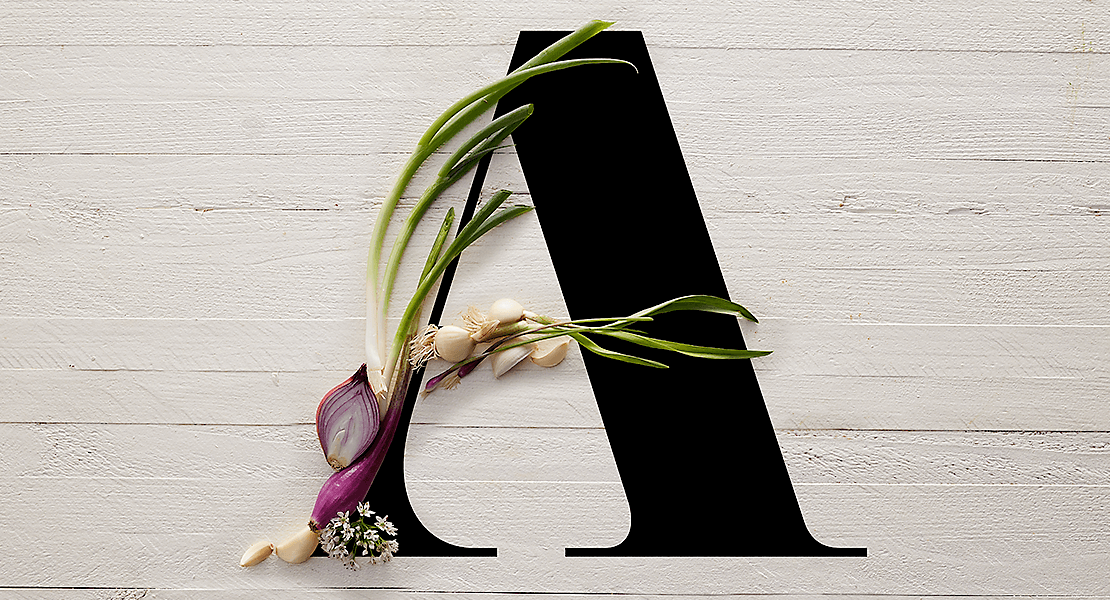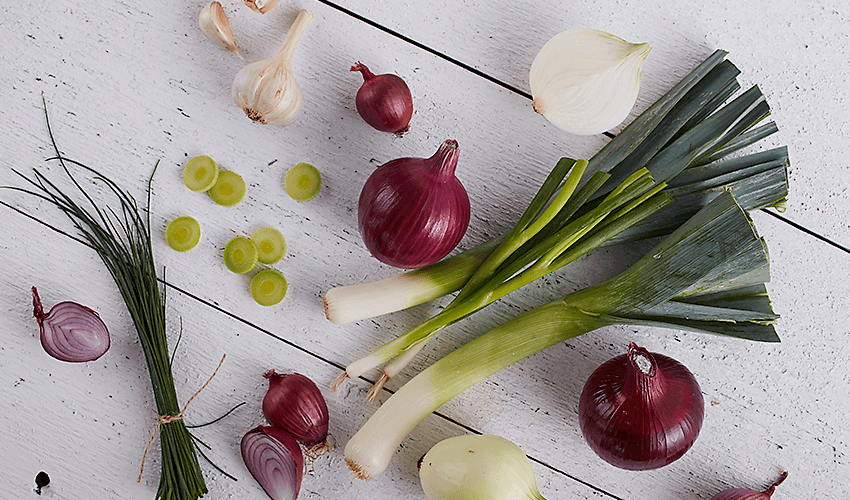
Classic question: If you were left alone on a deserted island and could only bring three ingredients, what would you bring?
For me, that’s easy. I would choose salt, onion and garlic every time. Most any raw or cooked dish can turn from boringly bland into something begging for a Michelin Star with those three simple ingredients.
Onion and garlic join other alliums, such as leeks, shallots and chives, in holding a vast amount of flavor potential, which is why they both make the list as essential culinary building blocks. When cooking at home, I typically use the alliums that I have on-hand when I am throwing a dish together. It’s amazing the dynamic flavor you can build when you have a half-used onion or clove of garlic laying around. Although, when I’m in the lab, it’s much different. I have access to over 130 allium extracts each crafted to hone in on a very specific flavor experience. Can you imagine, as a chef, having that many different alliums available to you? When I am working on a customer project I can choose from various types and forms of alliums, from their raw or fresh state or something more unique like smoked, fried, roasted and beyond. With this many options, you may wonder, where do I start?!

After you realize that alliums overall have so much great flavor and versatility, you can then start to experiment with how to use each one differently. But first, you have to understand what makes each one unique, and how they perform when raw and when cooked. I find the following chart to be a handy place to start.
Yellow Onion
The general onion used for cooking—pungent and sharp but flavors start to mellow after heat is added. If a recipe doesn’t specify, then go for this one.
White Onion
Pungent but crisp, it can be cooked but mainly used raw in applications like Mexican food and salads.
Green Onion/Scallion
Can be a younger onions or any type of onion grown to be harvested before bulb formed. Delivers a sweet and mild onion flavor. The green and white parts, which are typically separated, can be cooked or eaten raw.
Sweet Onion
Great to cook with (think casseroles, roasted vegetables) but also sweet and mild enough to eat raw such as sandwiches and salads. Types include Walla Walla, Vidalia, and Maui.
Red Onion
Often consumed raw and sometimes grilled or lightly cooked. It is mildly pungent and sharp and often used for color.
Leek
Typically cooked, mild and sweet leeks have three parts: white, light green and dark green. Typically, the white and light green are used while the dark green is discarded or used for stocks/broth. They are generally poached, roasted/baked, used in soups and sauces to add to overall flavor.
Shallot
Typical of French cuisine but now easier to find more broadly, they are less sharp and more delicate than onions. They are generally featured in a sauces, roasted whole, fried to top a dish, grated into a sauce or pickled.
Chives
Bright and green in flavor, they are typically used to finish dishes or used raw in dressings/sauces.
Spring Onion
Young onions that are picked early, but not as pungent as green onions and scallions. The green and white parts can be consumed but white is much more pungent. Both parts can be cooked.
Garlic
Sharp, almost spicy, and pungent, garlic is a great building block along with other alliums and base flavors. Can be cooked as the base of flavor from marinades, soups, sauces or served raw in sauces, dressings and seasonings.
When trying to figure out which allium to use, feel free to experiment. You can then expand to understand each type better. In the lab, I will often combine cooked notes with raw alliums to create a finished dish—think tacos with raw chopped onion on top but while onion and garlic were cooked slow and braised with the beef for the filling.
Now try it out for yourself and tag us on social media!